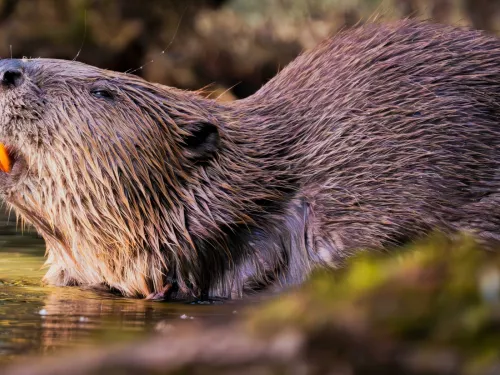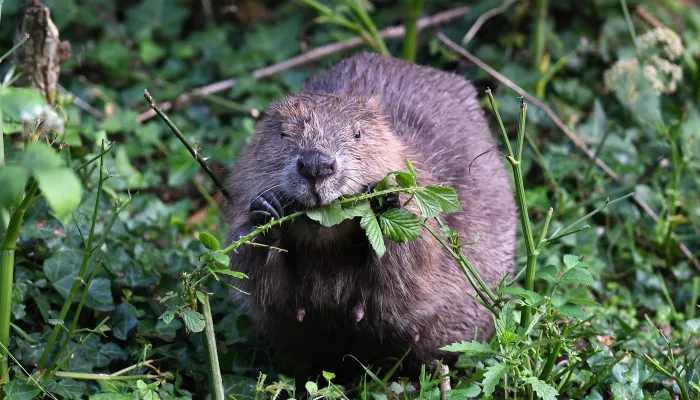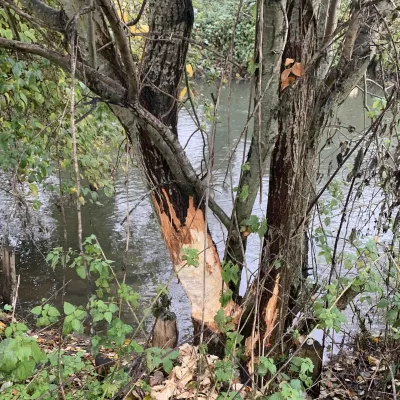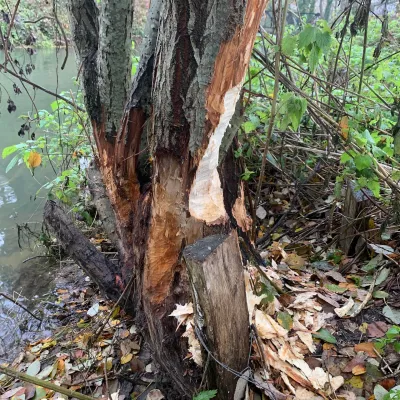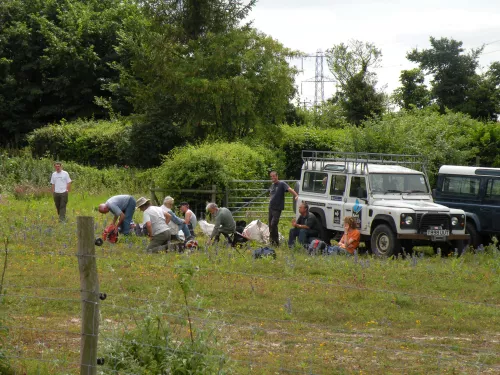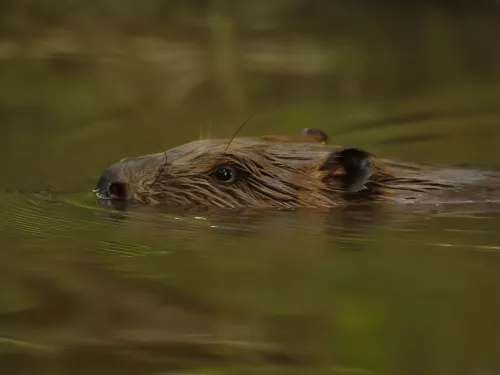I’d been tipped off by a colleague that there was a tree near to the Sainsbury’s car park in Canterbury that looked like it had been gnawed by a beaver. So, before heading off to do my Christmas shopping, I went for a walk along the riverbank and sure enough there were plenty of signs of beaver activity: gnawed branches, channels pushed through vegetation on the banks and a tree which wasn’t far from being completely felled. I stayed by the river for a while, but saw no beavers so decided to return at dusk.
Learn about the beavers of Kent through our education workshops
So, having finished my Christmas shopping for the day, I returned to the river, not expecting much and more in hope than anticipation. I had barely been standing there 30 seconds when, sure enough, a beaver swam right past me before diving and disappearing into the bushes which were overgrowing the bank on the other side. I just about had time to whip my gloves off and grab my camera to get some very grainy footage of the beaver swimming away from me.
What surprised me most about this encounter was not necessarily the fact that I was witnessing a beaver in the wild in Britain, but it was the seemingly nonchalant attitude of some of the locals – “Oh, it’s probably just the beavers” – as if this was a normal encounter amongst the Canterbury residents.
